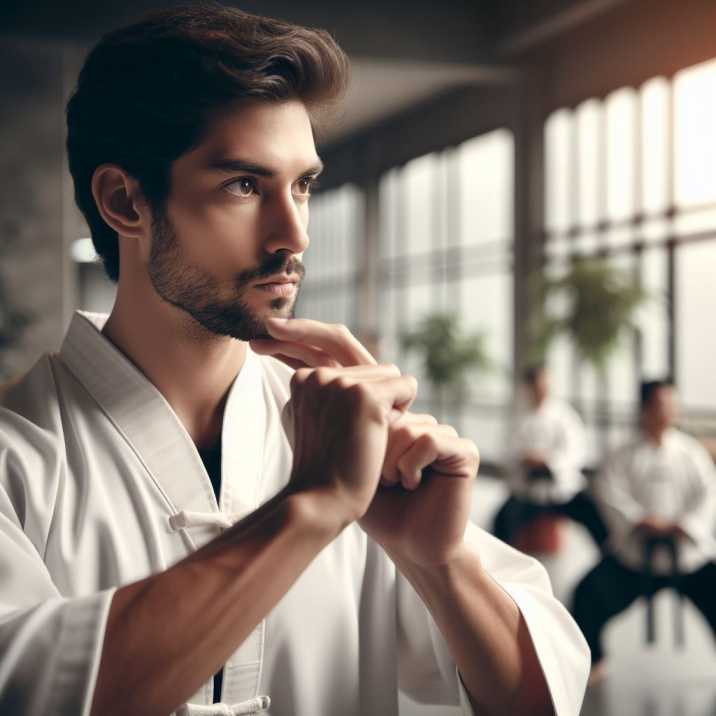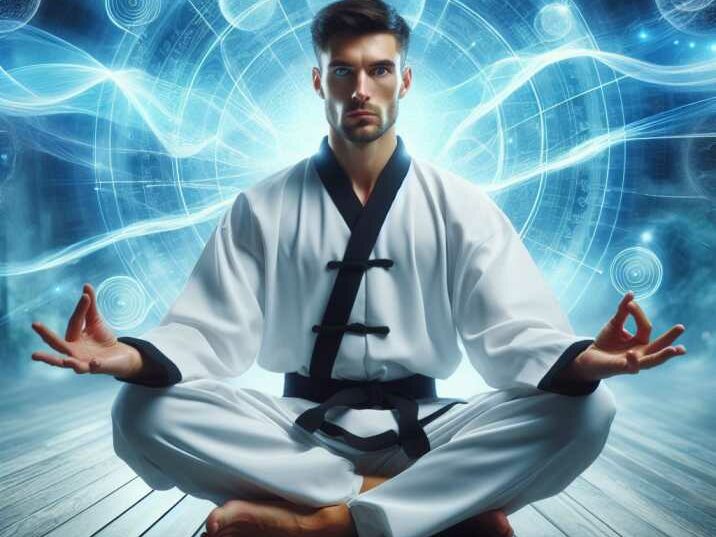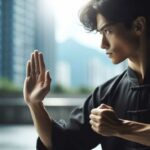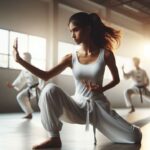In the ancient art of Kung Fu, mastering physical movements is only part of the journey towards becoming a true martial artist. The role of visualization in Kung Fu practice is equally significant, as it unlocks the mind’s potential to enhance performance and achieve mastery. By harnessing the power of visualization in Kung Fu techniques, practitioners can sharpen their skills, improve focus, and elevate their overall martial arts experience. In this comprehensive guide, we delve into the profound impact of visualization In Kung Fu practice, exploring its various benefits and practical applications.

The Power of Visualization in Kung Fu Practice
Table of Contents
Enhancing Technique Precision
Visualization plays a pivotal role in refining Kung Fu techniques by mentally rehearsing movements with precision and accuracy. By visualizing each movement in intricate detail, practitioners can ingrain proper form and execution into their muscle memory, leading to improved technique during actual practice sessions.
Heightened Focus and Concentration
In the fast-paced environment of Kung Fu training, maintaining focus is essential for optimal performance. Visualization techniques help practitioners develop a heightened sense of concentration by visualizing their goals, movements, and desired outcomes with unwavering clarity. This enhanced focus translates into improved reaction times and better overall performance in sparring and combat scenarios.
Overcoming Mental Barriers
Martial arts training often presents mental challenges that can hinder progress and performance. Visualization in Kung Fu serves as a powerful tool for overcoming these barriers by helping practitioners visualize themselves successfully overcoming obstacles and achieving their goals. Whether it’s mastering a difficult technique or competing in a tournament, visualization techniques instill confidence and mental resilience.
Improving Muscle Memory
Repetitive practice is key to mastering Kung Fu techniques, but visualization can accelerate the process by improving muscle memory. By mentally rehearsing movements and sequences, practitioners reinforce neural pathways associated with specific actions, leading to faster skill acquisition and greater proficiency in executing techniques.
Cultivating Inner Harmony and Balance
Beyond physical prowess, Kung Fu is also about cultivating inner harmony and balance. Visualization techniques not only enhance physical performance but also promote mental and emotional well-being. By visualizing a state of calmness, focus, and inner strength, practitioners can align their mind, body, and spirit, leading to a deeper connection with the art of Kung Fu.

Table: Benefits of Visualization in Kung Fu Practice
| Benefits | Description |
|---|---|
| Enhanced Technique Precision | Refine Kung Fu techniques with precision and accuracy through mental rehearsal. |
| Heightened Focus and Concentration | Develop a heightened sense of concentration for improved performance in training and combat scenarios. |
| Overcoming Mental Barriers | Overcome obstacles and build mental resilience by visualizing successful outcomes and goal achievement. |
| Improved Muscle Memory | Accelerate skill acquisition by reinforcing neural pathways through visualization techniques. |
| Inner Harmony and Balance | Cultivate mental and emotional well-being by aligning mind, body, and spirit through visualization. |
Conclusion
In conclusion, visualization in Kung Fu is an indispensable tool for aspiring and seasoned practitioners alike, seeking to unlock their full potential in the art of Kung Fu. By incorporating visualization techniques into their training regimen, martial artists can enhance technique precision, improve focus and concentration, overcome mental barriers, improve muscle memory, and cultivate inner harmony and balance. Embracing the power of visualization is not only a pathway to martial arts mastery but also a journey of self-discovery and personal growth.
FAQs (Frequently Asked Questions)
1. How often should I practice visualization techniques in Kung Fu?
It’s recommended to incorporate visualization into your daily training routine to maximize its benefits. Even a few minutes of focused visualization each day can yield significant results over time.
2. Can visualization help me improve my Kung Fu sparring skills?
Yes, visualization can enhance your sparring skills by mentally rehearsing various scenarios, movements, and counterattacks. This helps improve reaction times and strategic decision-making during sparring sessions.
3. Is visualization suitable for beginners in Kung Fu?
Absolutely! Visualization is beneficial for practitioners of all levels, including beginners. It helps lay a strong foundation by reinforcing proper techniques, building confidence, and cultivating a positive mindset from the outset.
4. How can I incorporate visualization into my Kung Fu training routine?
Start by setting aside dedicated time for visualization practice, preferably before or after your physical training sessions. Find a quiet space, visualize your goals and techniques with vivid detail, and focus on maintaining a clear mental image throughout.
5. Are there any specific visualization techniques recommended for Kung Fu practitioners?
While there are various visualization techniques, some popular ones for Kung Fu include mental imagery of forms, movements, and sparring scenarios, as well as visualizing desired outcomes and overcoming challenges with confidence.


